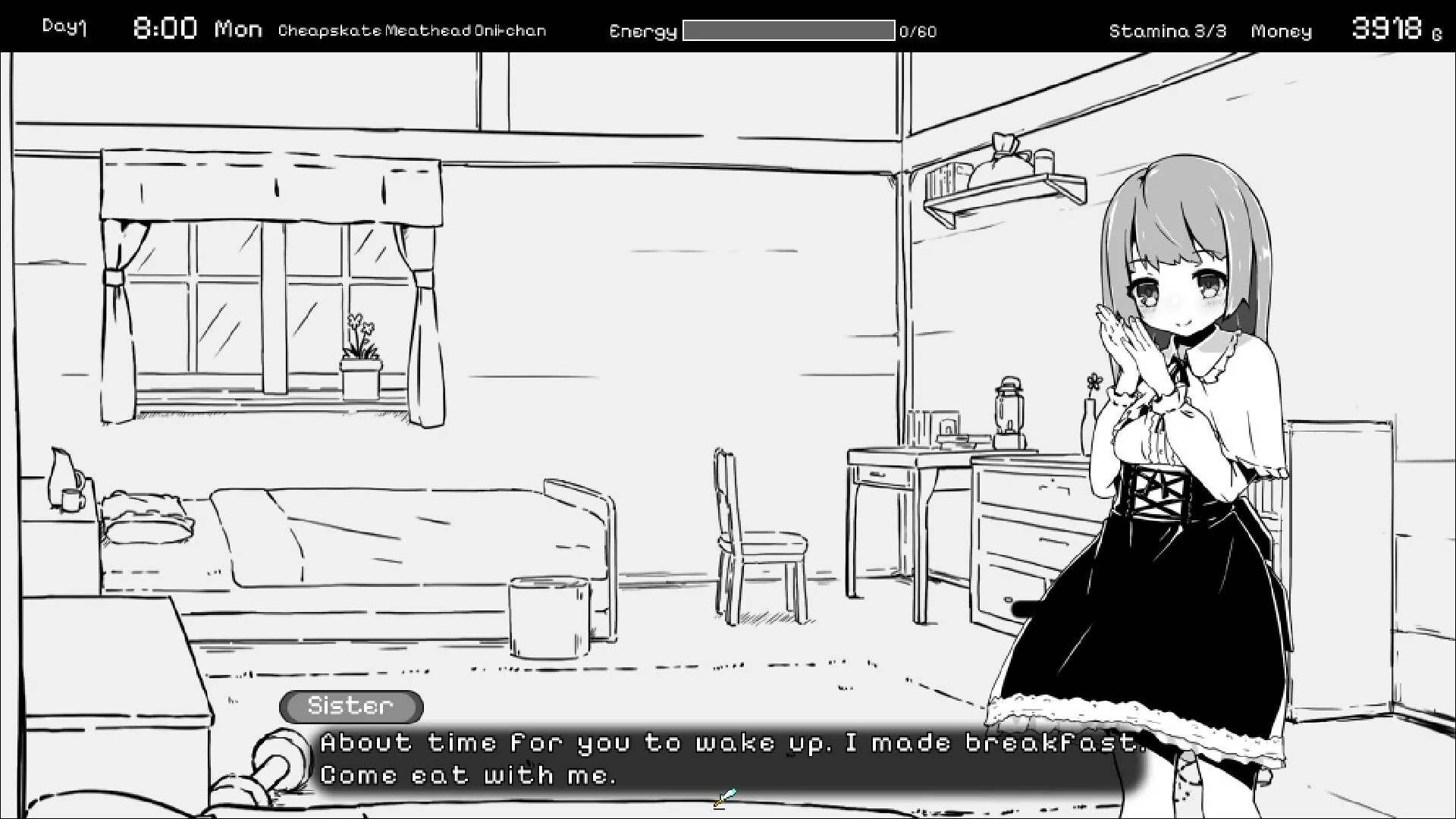
Artemis
Play Artemis
Artemis review
Explore the story, characters, and gameplay mechanics of this acclaimed visual novel experience
Artemis stands out as a compelling visual novel that has captured the attention of players worldwide. This interactive narrative experience combines engaging storytelling with meaningful character development across multiple chapters and books. Whether you’re new to visual novels or a seasoned player, understanding what makes Artemis unique can help you appreciate its depth and complexity. This guide explores the game’s structure, characters, gameplay features, and what players can expect from this evolving narrative experience.
Understanding Artemis: Game Overview and Structure
What Makes Artemis a Standout Visual Novel Experience
Let me tell you about the first time I truly fell into the world of Artemis visual novel game. 🎮 I’d played other story-driven games before, but there was something different about this one. Within minutes, I wasn’t just reading a story—I was living it. The characters felt like real people, the choices weighed on me, and the world wrapped around me like a warm blanket. That’s the magic of this particular interactive narrative experience—it doesn’t just tell you a story, it makes you part of it.
What really sets Artemis apart from other games in the genre? 🤔 It’s the perfect storm of several elements coming together. The writing is sharp and emotionally resonant, the character designs are stunningly detailed, and the visual novel gameplay mechanics are intuitive yet deep. I remember spending hours just exploring different dialogue options, amazed at how each choice subtly shifted the narrative direction. The game respects your intelligence while guiding you through an emotionally complex journey.
The presentation alone deserves awards. 🏆 Unlike some visual novels that feel static, Artemis brings its world to life through subtle character animation visual novel techniques. Characters don’t just stand there—they breathe, they fidget, they express themselves through body language. I noticed small details like how a character’s eyes might dart away when lying, or how their posture changes during emotional moments. These animations aren’t flashy, but they add incredible depth to every interaction.
One evening, I found myself so invested in a particular scene that I actually paused the game to think through my decision. 💭 That’s the power of Artemis—it makes you care enough to consider the consequences of your actions. The game creates these moments regularly, blending exposition with interactive sequences so seamlessly that you never feel like you’re either just reading or just playing. It’s this balance that makes the Artemis visual novel game such a memorable experience.
Book Structure and Chapter Progression System
When I first launched Artemis, I’ll admit the structure confused me slightly. 📚 Most visual novels I’d played were linear experiences, but Artemis organizes its content into books and chapters like a literary series. This actually works brilliantly for the visual novel story progression, allowing for natural breaking points and major narrative shifts between books.
Here’s how it works: The game is divided into Books, with each Book containing multiple chapters. Think of each Book as a season of your favorite TV show, with chapters serving as episodes. The Artemis game chapters typically run 45-90 minutes each, perfect for single-sitting playthroughs. What’s brilliant about this system is how it manages pacing—each chapter ends with just enough cliffhanger to make you crave the next, but with enough resolution to feel satisfying.
The transition between books is where Artemis really shines. 🌟 I remember reaching what I thought was the end of the story, only to discover that my journey was just beginning. Artemis Book 2 Chapter 5 specifically marks a significant turning point where the narrative expands in surprising ways. Without spoiling anything, this chapter introduces new dynamics that completely refresh the experience while building on everything that came before.
The chapter structure serves the story beautifully. Early chapters establish characters and relationships, middle chapters develop conflicts, and later chapters bring everything to explosive conclusions. The visual novel story progression feels organic rather than forced, with each chapter naturally flowing into the next while maintaining its own identity and purpose.
| Book | Chapter Range | Key Story Milestones |
|---|---|---|
| Book 1 | Chapters 1-4 | Character introductions, world establishment, initial conflicts |
| Book 2 | Chapters 5-8 | Expanded worldbuilding, deeper relationship development, major plot twists |
The beauty of this structure is how it accommodates different play styles. 🕹️ You can binge multiple chapters in one sitting or savor them individually. I found myself adopting different approaches—sometimes I’d power through several chapters when the story had me hooked, other times I’d sit with a single chapter for days, considering all the possible choices and outcomes. This flexibility makes the Artemis visual novel game accessible to both casual players and dedicated enthusiasts.
Gameplay Mechanics and Player Interaction
The heart of any great visual novel lies in how it engages the player, and Artemis absolutely nails its visual novel gameplay mechanics. 🎯 What impressed me most was how the game makes every interaction feel meaningful. This isn’t one of those experiences where choices are illusions—your decisions genuinely matter and create ripple effects throughout the entire narrative.
Navigation is beautifully intuitive. 🗺️ Instead of complicated menus or confusing interfaces, Artemis presents scenes cleanly and logically. You’re never more than a click or two away from where you want to be. The game uses a straightforward scene selection system that remembers your progress while allowing you to revisit key moments. I particularly appreciated how the journal feature tracks your relationships and important story beats, so you never lose track of narrative threads.
Choice implementation is where Artemis truly excels as an interactive narrative experience. 🤝 The game presents decisions that feel authentic rather than game-y. You’re not choosing between obvious “good” or “evil” options—you’re making nuanced decisions that reflect how real people might navigate complex situations. I found myself pausing frequently, genuinely torn between options because each felt valid within the context of the story and characters.
The environmental interaction deserves special mention. 🌳 Early in my playthrough, I discovered that clicking on background elements often reveals additional story details or character insights. These aren’t just Easter eggs—they’re meaningful additions that enrich the world. I remember clicking on a photograph in one character’s bedroom and uncovering a backstory element that completely changed how I viewed subsequent interactions with them.
Character interaction follows similarly sophisticated visual novel gameplay mechanics. 💬 Dialogue trees feel organic, with options that reflect different personality approaches rather than simple binary choices. The relationship system is wonderfully subtle—characters remember your previous interactions and respond accordingly. There’s no obvious “affection meter” telling you how you’re doing, which makes relationships feel more authentic and less game-like.
The game’s presentation elevates these mechanics through stunning visual execution. 🎨 The character animation visual novel elements are particularly impressive. Characters move with purpose and personality—a slight tilt of the head, a nervous hand gesture, a confident stride across the room. These animations aren’t just decorative; they communicate subtext and emotional states that dialogue alone couldn’t convey. I often found myself reading characters through their body language as much as their words.
Pacing is masterfully handled throughout the Artemis game chapters. ⏱️ The game knows exactly when to slow down for character moments and when to accelerate for dramatic sequences. I never felt bored during quieter sections because the writing and character work remained compelling, and I never felt overwhelmed during intense sequences because the game provided enough context to follow the action.
One of my favorite mechanical touches is how Artemis handles replay value. 🔄 The game makes it easy to explore different paths without forcing you to replay entire sections. The scene selection is robust, and the game clearly marks where significant branching occurs. This encouraged me to experiment with choices I might not have considered initially, leading to surprising narrative discoveries I would have otherwise missed.
The development team clearly put tremendous thought into how players would experience this world. 🧠 The interface is clean and unobtrusive, the save system is generous, and the customization options allow you to tailor the experience to your preferences. Whether you want to focus purely on the story or engage deeply with the visual novel gameplay mechanics, Artemis accommodates your approach beautifully.
What ultimately makes the Artemis visual novel game so special is how all these elements work in harmony. ✨ The structure supports the narrative, the mechanics serve the interaction, and the presentation brings everything to life. It’s a masterclass in how to create an interactive narrative experience that respects both the story and the player. Whether you’re new to visual novels or a seasoned veteran, Artemis offers an experience that will stay with you long after the final chapter concludes.
Artemis represents a sophisticated approach to visual novel storytelling, combining engaging narrative elements with meaningful player agency. The game’s transition into Book 2 marks an exciting evolution in its story, introducing new challenges and deepening character relationships established in earlier chapters. From its carefully crafted character designs to its immersive scene presentation, Artemis demonstrates the potential of interactive fiction to create memorable experiences. Whether you’re drawn to the complex character dynamics, the branching narrative paths, or the technical excellence of its visual presentation, Artemis offers something compelling for players seeking depth and engagement. As the game continues to evolve with new chapters, now is an excellent time to experience this unique visual novel and discover why it has resonated with so many players worldwide.









































